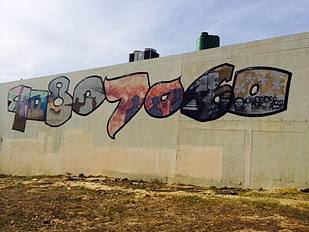South Africa’s Dark Past Told in Images

Food Blog: Singapore Chili Crabs
June 1, 2015
Essentials of Thought Leadership & Content Marketing
July 6, 2016Images are powerful. Can they be more powerful than words sometimes in conveying a feeling?
I was recently in Cape Town, South Africa learning about the gruesome apartheid system which was the law from 1948 when the Nationalist Party was voted in until 1994. Resistance was treacherous as it could mean long, painful jail sentences or torturing.
I came across this mural on the way to a township.

It is a powerful visual for each decade of resistance.
In the 1960s, disenfranchised black South African protested against having to carry passbooks denoting which racial classification they were categorized and therefore what level of rights they were entitled to.
In the 1970s, demonstrators rose up against being taught Afrikaan, a language they said that was of their oppressors. In the 1980s, there was finally general resistance against the system of Apartheid. Sadly, Robben Island, which imprisoned Nelson Mandela started receiving many young demonstrators. Then, the depiction in the mural of 1990s is that of hope. By 1990s, Mandela had been released from prison and a few years later, rather miraculously, became the new president in free elections.
Objects can also connote the cruelty of the past. This photo shows what a bench would have looked like during the apartheid era denoting “Whites Only.” This bench is outside the High Court Civil Annex is Cape Town where citizens would be subjected to humiliating court cases on which category of the 7 races they should be placed into by the Race Classification Board. The scale would range from ”White” (full rights) to “Bantu” (fewest rights).

Often families were split apart when different members were categorized under different races based on ancestry and arbitrary physical characteristics.
Cape Town’s District 6 Museum also has powerful imagery. This was the district that in 1966 was declared “white only.” All buildings except for churches were demolished with the residents forced to leave and re-settle to non-white areas. A sign from that era now hanging in the museum makes it all too real.

Just as the signs of oppression are a stark reminder to that dark past, so too were the signs of resistance. This stark photo protests of the mandatory carrying of race identity passes.

Other images I saw are a longing for a brighter future. I saw this logo– 20 years of Freedom– on t-shirts and in museum exhibits.

From the demolished District 66, I ran across this recipe from a one-time resident.

Images of hope shine through the country’s dark past.




